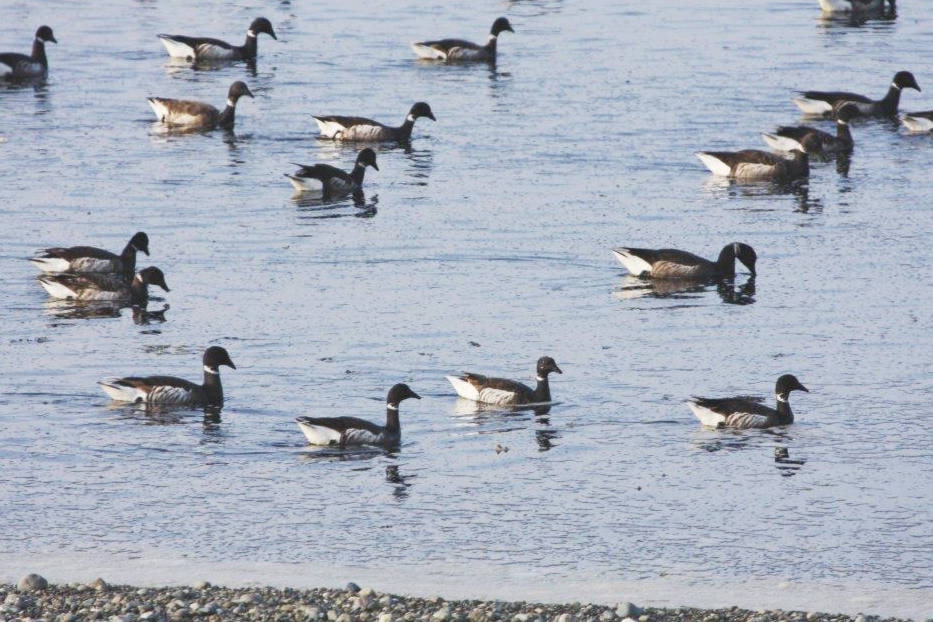By Margo Hearne
Things have calmed down after the big full-moon tides. The busy birds that rose above the pounding surf and rushing seas have moved on. The waves had churned up all sorts of edibles, and shellfish were torn from the offshore rocks. Much of it washed onshore before the next big tide took it all away. Birds, like us, have to seize the moment. When the food is there we all come and get it: cockles, clams, and other mollusks.
Most of the gulls that fed near Skonun Point a week ago have now gone, including the Slaty-backed. There’s the usual winter flock, a few Glaucous-winged, a few Mew and the occasional Western, but all the rest have heard and smelled the rumours of Oolichan running in the mainland rivers. They have gone east to vie with seals, sea lions, and eagles for the early spring feast.
The Brant home team are still here. More of these lovely geese will start to move through soon and land in their favourite places. The local flock gets pretty territorial. If studies hadn’t been done on the birds, we wouldn’t know who was who out there. But we learned over time that the same flock used the same areas each winter and they drove the spring interlopers from the best places.
In the mid-1990s many Brant were leg-banded on the nesting grounds, and birds from Siberia, the Canadian Arctic, and especially the Yukon-Kuskokwim Delta stopped off here. In stormy weather the local team mixed with the migrants for warmth and shelter as they stood together on the high beach.
It was truly wild. The wind screamed over them as they rode it out, standing on one leg, heads tucked under wings as the gusts shook them. It was one of the best times to read leg-band numbers. I was lucky enough once to find a semi-sheltered place behind a big log before they moved up and stood around me. I took frantic notes and practically froze to death. Then, when the tide changed and the wind dropped, they all rose with a rush and I was left alone, just me, the wind-scorched sand and my notebook full of information.
Now there’s a moment of calm. Eagles call from the trees, the northeast nip has gone from the air, and clouds have moved in. The bright sun usually comes with a cold wind, the warm southerlies bring rain, and the wild world adapts. Small flocks of American Robins have returned and run through the golf courses and a Northern Flicker feeds with them. A flock of Pine Siskins remain at the feeder and we had a bright surprise last week.
Just when the cold wind hit a Brambling landed beneath the Cotoneaster bush and picked at a few seeds. It stayed for about 50 seconds! There has been a Brambling in town most of the winter, now we have two! Where are the sapsuckers — those lovely, noisy woodpeckers with the bright red heads? Roll on spring’s long days and warm nights.
